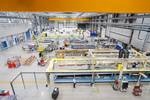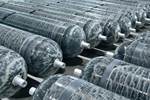Airbus invests in clean hydrogen infrastructure investment fund
The largest in the world, Hy24’s investment fund is expected to provide financial capital to back large-scale green hydrogen infrastructure projects worldwide.
ZEROe aircraft concepts revealed earlier this year. Photo Credit: Airbus
Airbus (Toulouse, France) has joined what is reported to be the world’s largest clean hydrogen infrastructure investment fund, managed by Hy24 — a joint venture between private investment house Ardian (Paris, France) and FiveTHydrogen (Pfäffikon, Switzerland), a clean hydrogen investment manager.
Hy24’s investment fund will provide financial capital to back credible, large-scale green hydrogen infrastructure projects worldwide. Airbus’ involvement assures its commitment to the scaling up of a global hydrogen economy, a prerequisite for the successful entry-into-service of its zero-emission commercial aircraft by 2035.
"Since 2020, Airbus has partnered with numerous airlines, airports, energy providers and industry partners to develop a stepped approach to global hydrogen availability,” Karine Guenan, VP ZEROe Ecosystem, Airbus, says. “Joining a fund of this magnitude demonstrates Airbus’ continuously active role in infrastructure investments for the production, storage and distribution of clean hydrogen worldwide.”
According to Pierre-Etienne Franc, the CEO of Hy24, the joint venture is well-positioned to identify and accelerate the development of clean hydrogen infrastructure companies to meet the needs of transportation and logistics.
Related Content
-
Composites end markets: Pressure vessels (2024)
The market for pressure vessels used to store zero-emission fuels is rapidly growing, with ongoing developments and commercialization of Type 3, 4 and 5 tanks.
-
Update: THOR project for industrialized, recyclable thermoplastic composite tanks for hydrogen storage
A look into the tape/liner materials, LATW/recycling processes, design software and new equipment toward commercialization of Type 4.5 tanks.
-
Composite pressure vessels enable future energy storage
Q&A between Hexagon Purus, Infinite Composites and Hyosung USA delves into the future of H2 storage, including scalability and production goals, materials and application trends and other dynamics.



